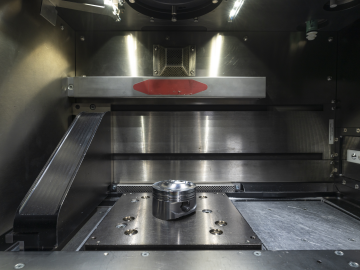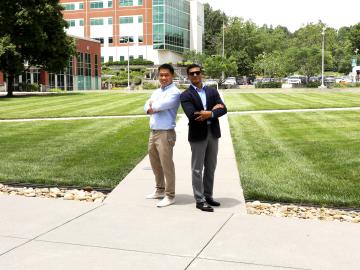
Filter News
Area of Research
- (-) Materials (53)
- (-) National Security (34)
- (-) Supercomputing (118)
- Advanced Manufacturing (3)
- Biology and Environment (31)
- Building Technologies (1)
- Computational Biology (1)
- Computational Engineering (3)
- Computer Science (15)
- Electricity and Smart Grid (3)
- Energy Science (117)
- Functional Materials for Energy (1)
- Fusion and Fission (27)
- Fusion Energy (15)
- Isotopes (1)
- Materials for Computing (14)
- Mathematics (1)
- Neutron Science (23)
- Nuclear Science and Technology (14)
- Quantum information Science (9)
- Sensors and Controls (1)
- Transportation Systems (2)
News Type
News Topics
- (-) Computer Science (107)
- (-) Fusion (8)
- (-) Grid (15)
- (-) Machine Learning (24)
- (-) Molten Salt (3)
- (-) Quantum Science (34)
- (-) Transportation (21)
- 3-D Printing/Advanced Manufacturing (28)
- Advanced Reactors (6)
- Artificial Intelligence (48)
- Big Data (25)
- Bioenergy (20)
- Biology (17)
- Biomedical (22)
- Biotechnology (3)
- Buildings (8)
- Chemical Sciences (32)
- Clean Water (3)
- Composites (9)
- Coronavirus (19)
- Critical Materials (15)
- Cybersecurity (23)
- Energy Storage (37)
- Environment (39)
- Exascale Computing (26)
- Frontier (32)
- High-Performance Computing (47)
- Irradiation (1)
- Isotopes (14)
- ITER (1)
- Materials (79)
- Materials Science (78)
- Mathematics (2)
- Microscopy (27)
- Nanotechnology (40)
- National Security (35)
- Neutron Science (42)
- Nuclear Energy (23)
- Partnerships (15)
- Physics (32)
- Polymers (17)
- Quantum Computing (21)
- Security (15)
- Simulation (16)
- Software (1)
- Space Exploration (5)
- Summit (43)
Media Contacts

Dean Pierce of ORNL and a research team led by ORNL’s Alex Plotkowski were honored by DOE’s Vehicle Technologies Office for development of novel high-performance alloys that can withstand extreme environments.

Wildfires have shaped the environment for millennia, but they are increasing in frequency, range and intensity in response to a hotter climate. The phenomenon is being incorporated into high-resolution simulations of the Earth’s climate by scientists at the Department of Energy’s Oak Ridge National Laboratory, with a mission to better understand and predict environmental change.

When geoinformatics engineering researchers at the Department of Energy’s Oak Ridge National Laboratory wanted to better understand changes in land areas and points of interest around the world, they turned to the locals — their data, at least.

Tristen Mullins enjoys the hidden side of computers. As a signals processing engineer for ORNL, she tries to uncover information hidden in components used on the nation’s power grid — information that may be susceptible to cyberattacks.

Creating energy the way the sun and stars do — through nuclear fusion — is one of the grand challenges facing science and technology. What’s easy for the sun and its billions of relatives turns out to be particularly difficult on Earth.

To support the development of a revolutionary new open fan engine architecture for the future of flight, GE Aerospace has run simulations using the world’s fastest supercomputer capable of crunching data in excess of exascale speed, or more than a quintillion calculations per second.

ORNL scientists found that a small tweak created big performance improvements in a type of solid-state battery, a technology considered vital to broader electric vehicle adoption.
For the third year in a row, the Quantum Science Center held its signature workforce development event: a comprehensive summer school for students and early-career scientists designed to facilitate conversations and hands-on activities related to

ORNL will team up with six of eight companies that are advancing designs and research and development for fusion power plants with the mission to achieve a pilot-scale demonstration of fusion within a decade.

A study led by researchers at ORNL could uncover new ways to produce more powerful, longer-lasting batteries and memory devices.


